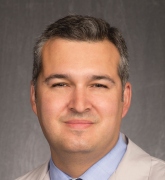Intraoperative Efficiency in Contemporary Total Shoulder Arthroplasty: Is Manual Pressure During Cement Curing Still Necessary With Interference Fit Pegged Glenoids? Journal Article
Local Library Link: Find It @ Loyola
| Authors: | Garbis, NG; Burr, RG; Schneider, AM; Murphy, M; Salazar, DH |
| Article Title: | Intraoperative Efficiency in Contemporary Total Shoulder Arthroplasty: Is Manual Pressure During Cement Curing Still Necessary With Interference Fit Pegged Glenoids? |
| Abstract: | INTRODUCTION: No previous data have demonstrated the effect of manual pressure during cement curing on interference-fit glenoid implant fixation in total shoulder arthroplasty. In this study, we examined cement mantle characteristics and implant seating using two different methods of securing an interference-fit glenoid implant with peripheral cemented pegs: a manual pressure technique versus a pressureless technique. METHODS: Sixteen cadaveric scapulae were harvested, and their glenoids were prepared for component insertion. Glenoids with an interference-fit central peg were cemented into the peripheral holes and fully seated. Two techniques were employed during cement curing: (1) a manual pressure technique (8 glenoids), which used a static 70 N load application to each implant for 10 minutes; and (2) a pressureless technique (8 glenoids), which used no pressure application, and the implant was left to set without intervention. Each glenoid was subsequently imaged using microcomputed tomography and analyzed for differences in cement mantle characteristics and implant seating. RESULTS: The mean area of cement penetration for the manual pressure technique was not statistically different from the pressureless group (P = .26, valid N = 288). The average implant incongruity after final seating in the manual pressure group was 0.63 mm, compared with 1.0 mm in the pressureless group. A linear mixed effects model with a Kenward-Roger correction was used to compare the two groups, and no significant difference was found (Mdiff = -0.386, 95% confidence interval: -0.978 to 0.206; P = 0.17). CONCLUSION: Manual pressure of the glenoid component during cement curing yielded no difference in the cement mantle area or final implant seating incongruity compared with a pressureless technique. This knowledge could potentially benefit both the surgeon and the patient by increasing the efficiency in total shoulder arthroplasty surgery. |
| Journal Title: | The Journal of the American Academy of Orthopaedic Surgeons |
| ISSN: | 1067-151X; 1067-151X |
| Publisher: | Unknown |
| Date Published: | 2019 |


